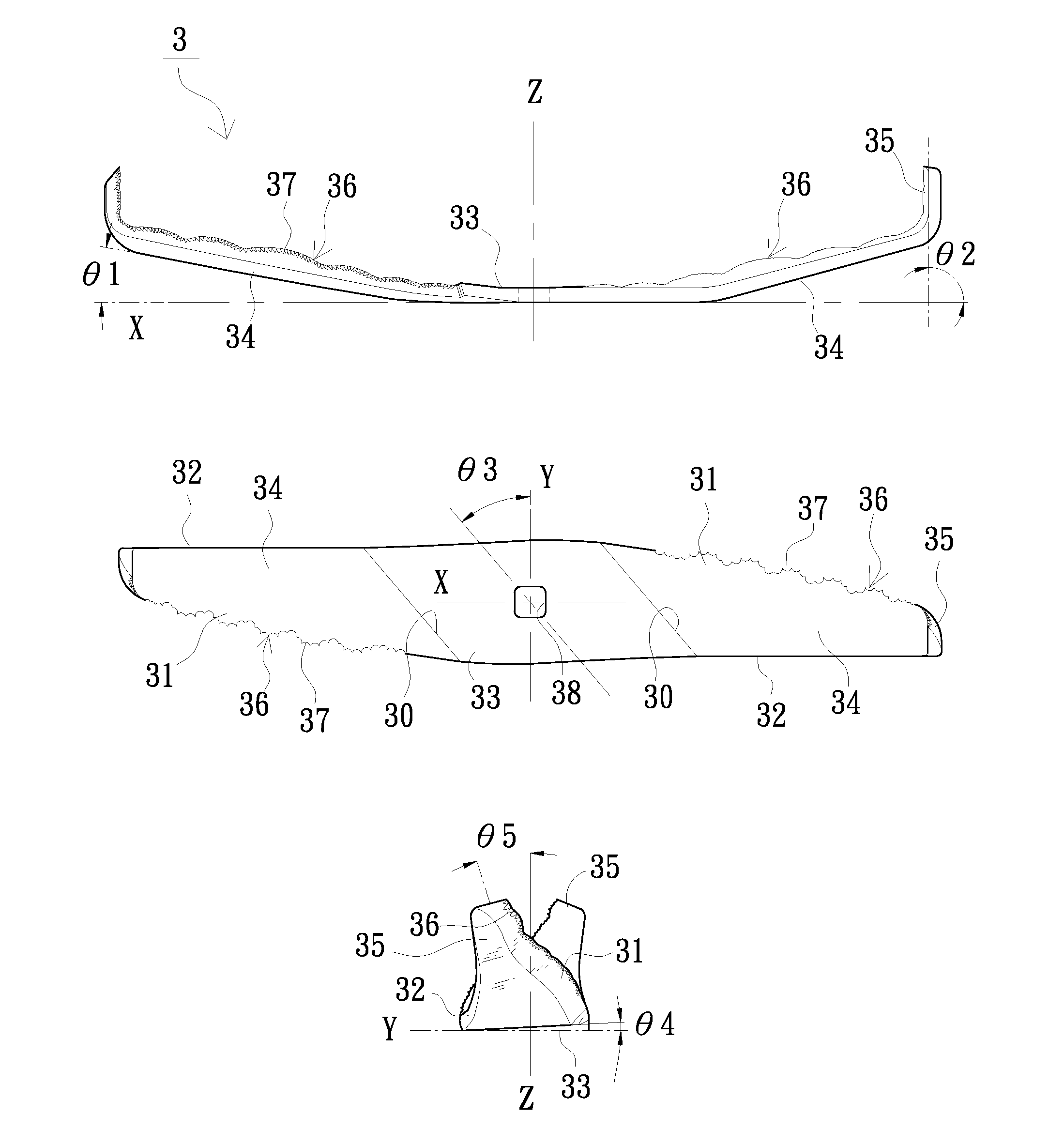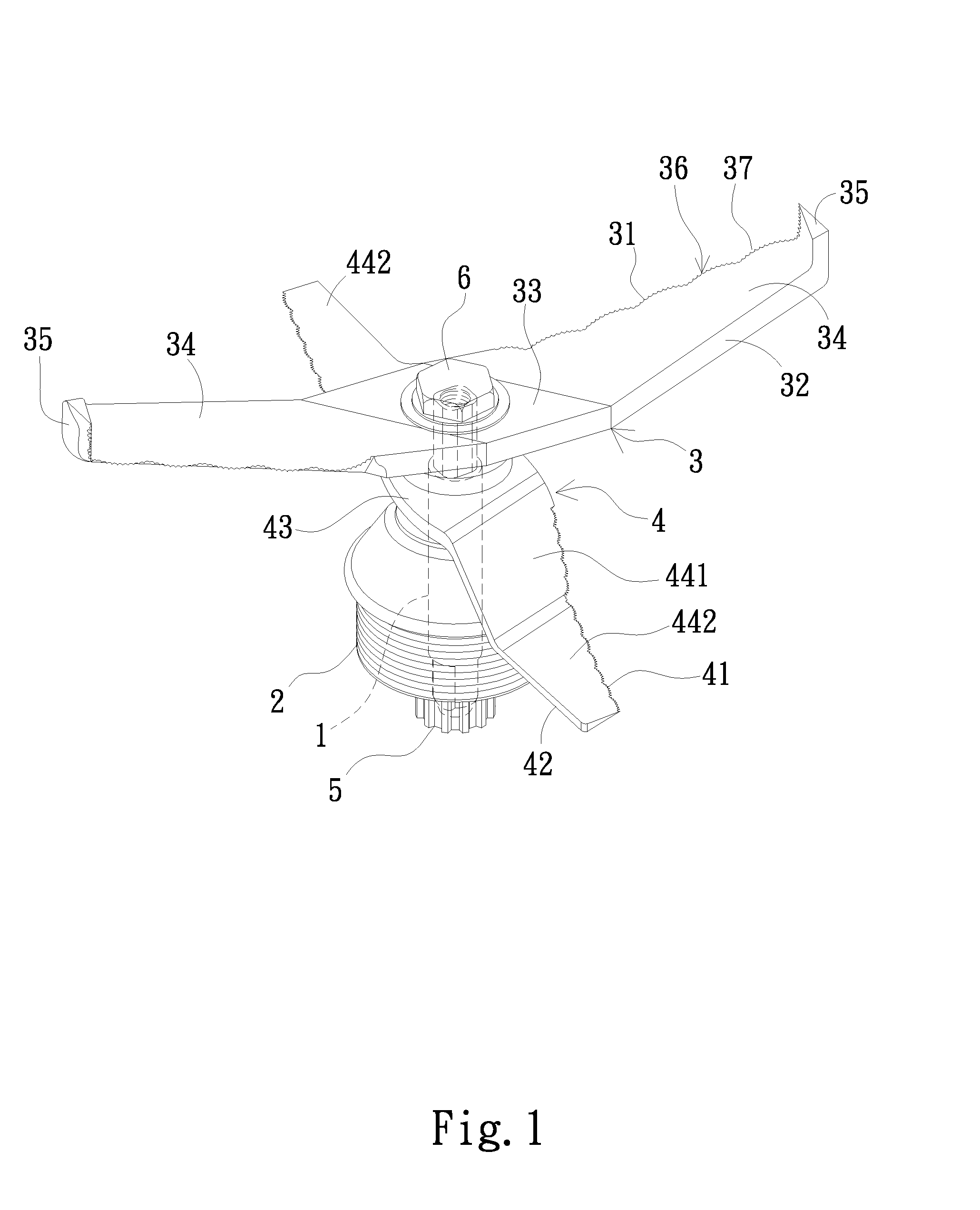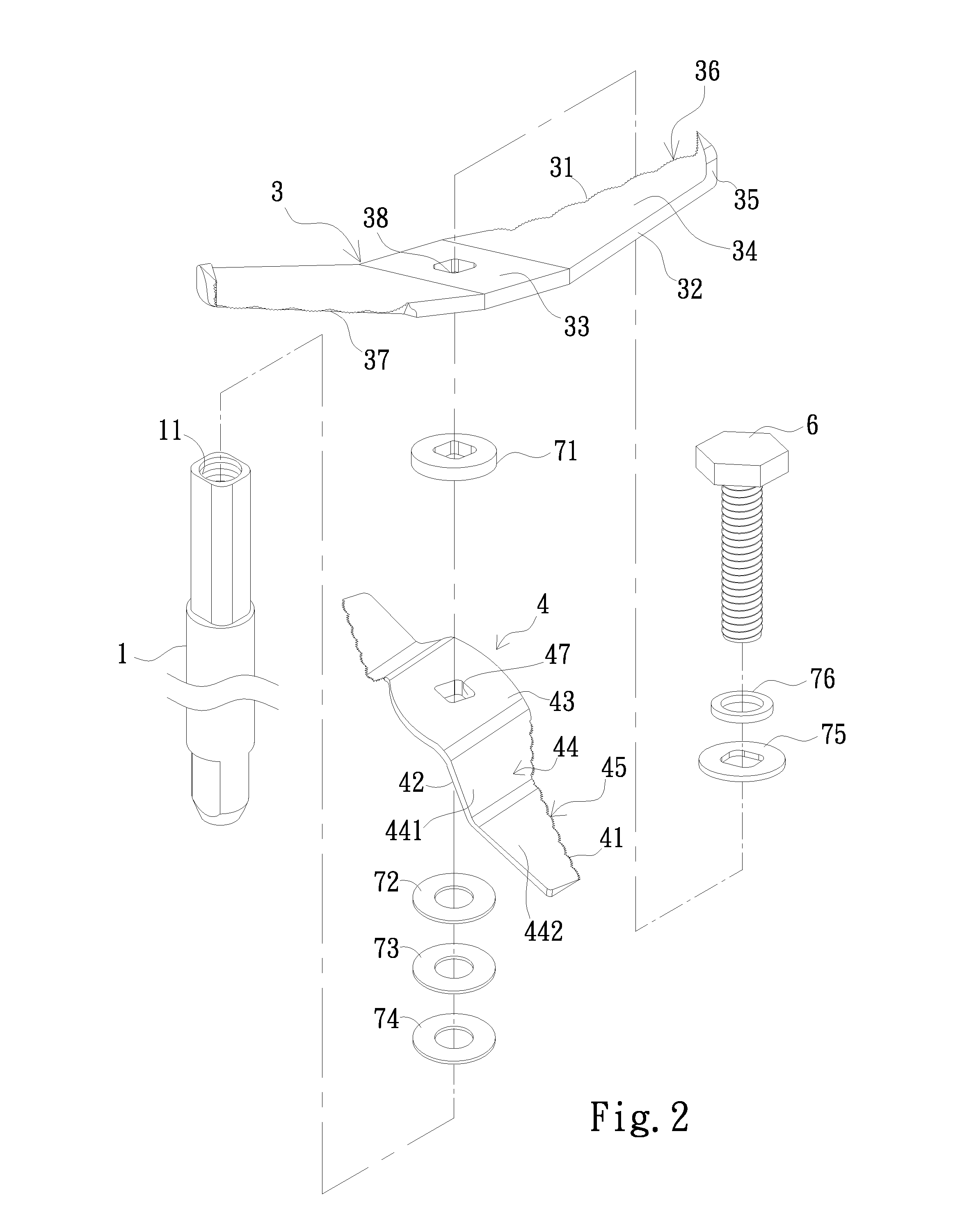Blade assembly of a blender
a technology of blades and blenders, which is applied in the direction of mixers, peelers, kitchen equipment, etc., can solve the problems of reducing the efficiency of the blender, and increasing the power consumption of the blender, so as to shorten the processing time and increase the efficiency
- Summary
- Abstract
- Description
- Claims
- Application Information
AI Technical Summary
Benefits of technology
Problems solved by technology
Method used
Image
Examples
Embodiment Construction
[0016]The preferred embodiments of the present invention are described in detail according to appended drawings.
[0017]Referring to FIGS. 1-3, a blade assembly of a blender consists of a first and a second blade (3, 4) spaced by a gasket (71) and other three gaskets (72, 73, 74) are provided on the bottom of the second blade (4). Said first and second blades (3, 4) have a square axial hole (38, 47) provided on each thereof, and a screw (6) which can pass said axial holes (38, 47), gaskets (72, 73, 74) and screwed into a receiving hole (11) of a drive shaft (1) for fastening the blades (3, 4). A seat (2) which corresponds with said drive shaft (1) is provided under, and a gear (5) is provided on the bottom of the seat (2). To ensure both blades can be fixed tightly, two gaskets (75, 76) are provided further between the screw (6) and the first blade (3).
[0018]Said first blade (3) comprises a cutting edge (31) on a side and a spine (32) on another side. Referring to FIG. 4, said first b...
PUM
 Login to View More
Login to View More Abstract
Description
Claims
Application Information
 Login to View More
Login to View More - R&D
- Intellectual Property
- Life Sciences
- Materials
- Tech Scout
- Unparalleled Data Quality
- Higher Quality Content
- 60% Fewer Hallucinations
Browse by: Latest US Patents, China's latest patents, Technical Efficacy Thesaurus, Application Domain, Technology Topic, Popular Technical Reports.
© 2025 PatSnap. All rights reserved.Legal|Privacy policy|Modern Slavery Act Transparency Statement|Sitemap|About US| Contact US: help@patsnap.com



